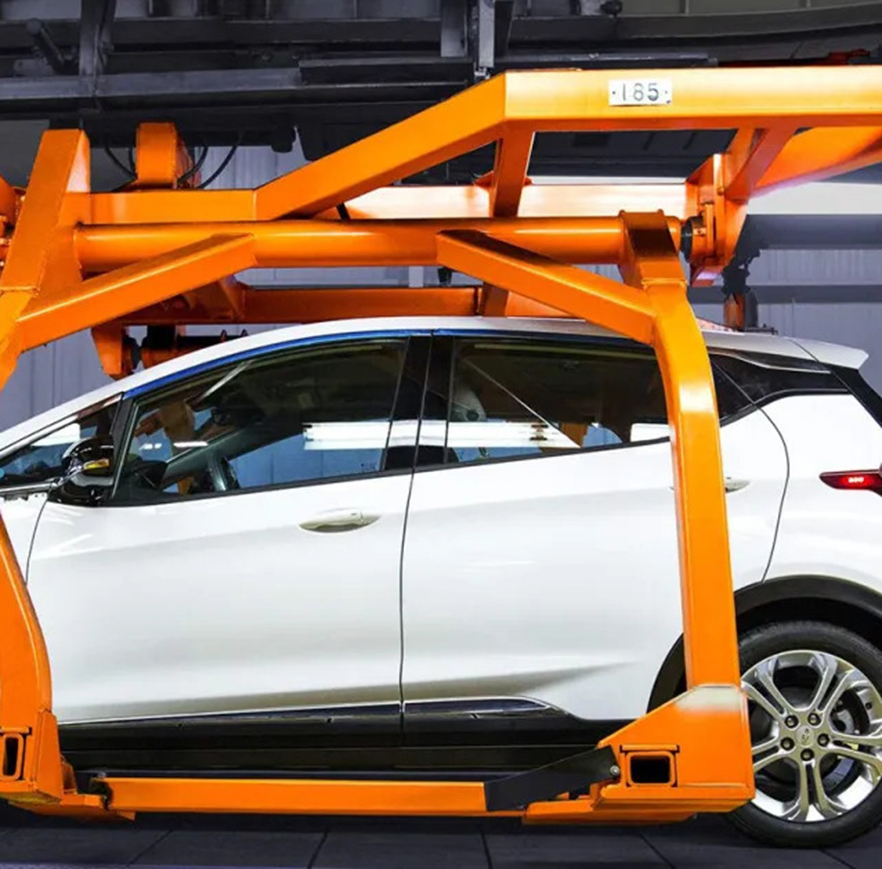In a surprising turn of events, General Motors (GM) has announced that it will be ending production of the Chevrolet Bolt, its first foray into the mass-market electric vehicle (EV) segment. The Bolt, a pivotal model in GM’s electric transition, has been a beacon of change in the auto industry since its debut. Its discontinuation marks the end of a significant chapter in GM’s history.
The Chevy Bolt: An Emblem of Change in the Electric Vehicle Landscape
The Chevy Bolt occupies a distinctive position, not just within General Motors’ (GM) lineup, but also in the wider context of the global automotive industry. First introduced to the public in 2016, the Bolt spearheaded a transformative wave in the electric vehicle (EV) segment, pioneering new possibilities and potential for the broader adoption of clean energy vehicles. Being one of the initial mass-market electric vehicles boasting a range of over 200 miles on a single charge, the Bolt turned heads and piqued interest. Its arrival on the scene wasn’t just the launch of a new car; it was a powerful statement about the future of transportation. The Bolt made the concept of owning an electric vehicle not only attainable for average consumers but also highly practical for daily use. It successfully debunked the prevailing myths around electric mobility, offering affordability without compromising on performance and range. The advent of the Bolt marked a significant milestone in the evolution of electric vehicles. It indicated a momentous shift in the auto industry’s trajectory, a step towards making electric vehicles a standard, accessible choice, rather than a luxury or niche option. By breaking the 200-mile range barrier at an affordable price point, the Bolt shifted the conversation around EVs from “if” to “when”, leading the charge in the transition to a more sustainable future. The Bolt’s launch served as a tangible demonstration of GM’s commitment to an electric future and sustainability. It showcased GM’s innovative prowess and positioned the company at the forefront of the EV revolution. More importantly, it exemplified GM’s ambition to democratize electric mobility, making it accessible to the everyday driver.
A Journey of Innovation and Challenges: The Chevy Bolt’s Evolution

The Chevy Bolt’s journey, since its introduction, has been one marked by significant milestones, bold innovation, and persistent challenges. Over the years, the Bolt carved a place for itself in the market and in the hearts of consumers, thanks to its compelling mix of affordability, impressive range, and compact yet practical design. Its influence and success were instrumental in debunking several deep-seated misconceptions about electric vehicles (EVs). Often, EVs were seen as exclusive, prohibitively expensive machines with inadequate range – more of a novelty than a practical solution for daily transportation. However, the Bolt flipped this narrative on its head. With a range exceeding 200 miles and an affordable price tag, it proved that EVs could indeed be both cost-effective and practical for everyday use. Its compact design further added to its appeal, making it a versatile choice suitable for city commuting, family use, and everything in between. The Bolt’s impact went beyond its sales figures; it played a pivotal role in reshaping public perception of electric mobility. It painted a picture of a future where EVs could be a mainstay in the average household, replacing traditional gasoline vehicles. In essence, the Bolt was more than just a car; it was a symbol of a new era of accessible and practical electric mobility. However, the path to innovation is rarely without its hurdles, and the Bolt’s journey was no exception. In recent years, the model faced challenges due to issues related to its battery system, leading to recalls. These setbacks presented a substantial challenge, threatening to overshadow the Bolt’s impressive accomplishments.
Embracing the Future: GM’s Electric Vision Post-Chevy Bolt
GM’s decision to conclude the production of the Chevy Bolt does not signify the end of an era but rather a pivotal transition. It’s the close of one chapter and the exciting beginning of another in the company’s electric vehicle (EV) journey. GM’s vision for the future of electric mobility is grand, innovative, and expansive, with a slew of new electric models waiting in the wings. GM’s upcoming electric vehicles are not merely iterations of existing models with electric powertrains, but ground-up designs that redefine what an EV can be. Some upcoming models already drawing substantial attention include the GMC Hummer EV and the Cadillac Lyriq. These vehicles represent GM’s commitment to offer compelling electric vehicles across different segments, from luxury to utility. These new models aim to push the boundaries of what electric vehicles can achieve in terms of performance, comfort, and advanced features. They continue GM’s mission to accelerate the adoption of electric vehicles by making them an increasingly viable and attractive option for a broad range of consumers.
As we bid farewell to the Bolt, we look forward to GM’s future electric endeavors. If its legacy has taught us anything, it’s that GM is not afraid to innovate and push boundaries. The Bolt may be reaching the end of its production line, but its impact will undoubtedly resonate in GM’s future electric vehicles.





